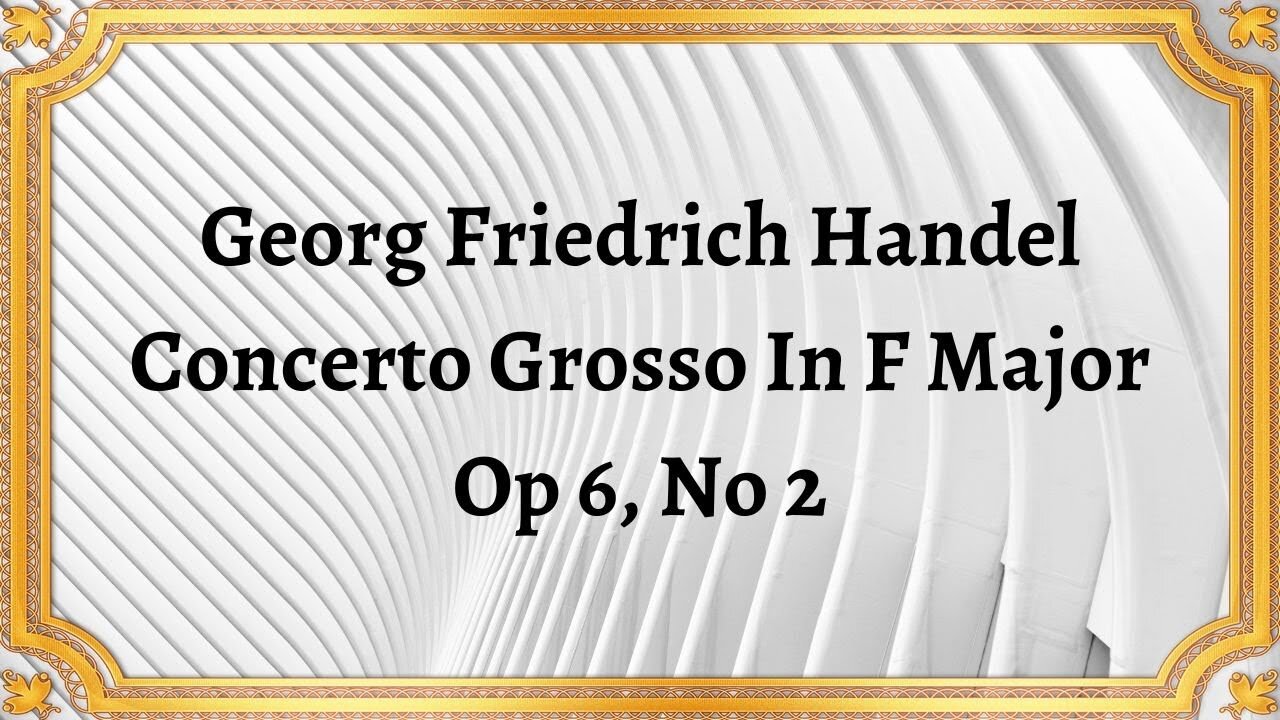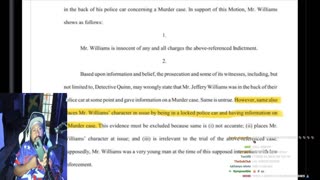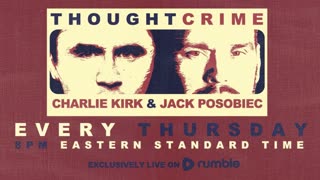Premium Only Content

Georg Friedrich Handel Concerto Grosso In F Major, Op 6, No 2
#classical_music , #Composition, #Baroque_Era, #Concerto_Grosso, #Soloists, #Orchestra, #Georg_Friedrich_Handel, #FMajor, #Op6,#No2, #Music_Theory
Publication date 1950
THE BOYD NEEL STRING ORCHESTRA conducted by BOYD NEEL
Georg Friedrich Händel Concerto Grosso In F Major, Op 6, No 2 is a musical composition that was written by the brilliant German-English composer, Georg Friedrich Händel. This piece is part of a set of twelve concerti grossi that Händel composed during his time in Rome, Italy, between 1707 and 1708.
The concerto grosso is a musical genre that emerged in the late 17th century and was popular in Europe until the middle of the 18th century. This genre is characterized by the interplay between a small group of soloists, called concertino, and a larger ensemble, called the ripieno. The concertino usually consists of two violins and a cello, while the ripieno consists of tutti strings and basso continuo.
Händel's Concerto Grosso In F Major, Op 6, No 2 is a perfect example of this musical genre. It is composed of four movements: Vivace, Allegro, Largo, and Allegro. The concerto starts with a lively Vivace movement that introduces the main motif of the piece. This is followed by an energetic Allegro movement that features call-and-response passages between the concertino and ripieno.
The third movement of the concerto is a Largo, which means "slow" in Italian. This movement is a beautiful and melancholic adagio that showcases the expressive capabilities of the soloists. The last movement is another Allegro, which closes the concerto with a brilliant and virtuosic display of musicianship.
One of the unique features of Händel's Concerto Grosso In F Major, Op 6, No 2 is the use of a viola solo in the third movement. This is a departure from the usual concertino configuration, which features two violins and a cello. The viola solo, which is played with a muted and mellow tone, creates a haunting and emotional atmosphere that contrasts with the more energetic and lively movements of the concerto.
Overall, Händel's Concerto Grosso In F Major, Op 6, No 2 is a masterpiece of the Baroque era. Its complex and sophisticated structure, combined with its emotional intensity and virtuosity, make it a prime example of the concerto grosso genre. This piece continues to inspire musicians and audiences alike, centuries after its composition.
You have the opportunity to support the channel https://destream.net/live/RadSiarAl/donate
-
 LIVE
LIVE
Akademiks
2 hours agoWar in RAT-LANTA. Young Thug vs Gunna vs Ralo vs YSL MONDO. Who Will Le Bebe Pick. FINAL CRASHOUT!
2,022 watching -
 DVR
DVR
Man in America
6 hours agoThe Final Battle: Nanotech, Transhumanism & the War for Your Soul w/ Dr. Ed Group
7.74K -
 LIVE
LIVE
Sarah Westall
54 minutes agoUpcoming World Wide Economic Collapse/Deep Recession & What the Big Money is Doing w/ Ed Dowd
431 watching -
 LIVE
LIVE
Barry Cunningham
2 hours agoIT'S MOVIE NIGHT WITH BARRY!
4,207 watching -
 31:05
31:05
The Why Files
2 days agoPeru's Most Terrifying Mystery | The Face Peelers
20.1K40 -
 1:32
1:32
Gaming on Rumble
10 hours agoWhat is the Rumble Creator Program?!?! | Lvl UP
12.4K4 -
 LIVE
LIVE
Flyover Conservatives
21 hours ago9/11 on Steroids: What’s Coming This Fall? - Bo Polny | FOC Show
769 watching -
 1:01:28
1:01:28
Precision Rifle Network
7 hours agoS4E27 Guns & Grub - Let's Talk About Gas Guns
5.65K1 -
 59:29
59:29
The Charlie Kirk Show
3 hours agoTHOUGHTCRIME Ep. 96 — The Great Flag Burning Debate
32.2K21 -
 57:56
57:56
The Mel K Show
3 hours agoMel K & General Mike Flynn | Betrayal of a Nation: Soros’ NATO World Order | 8-28-25
20.2K18